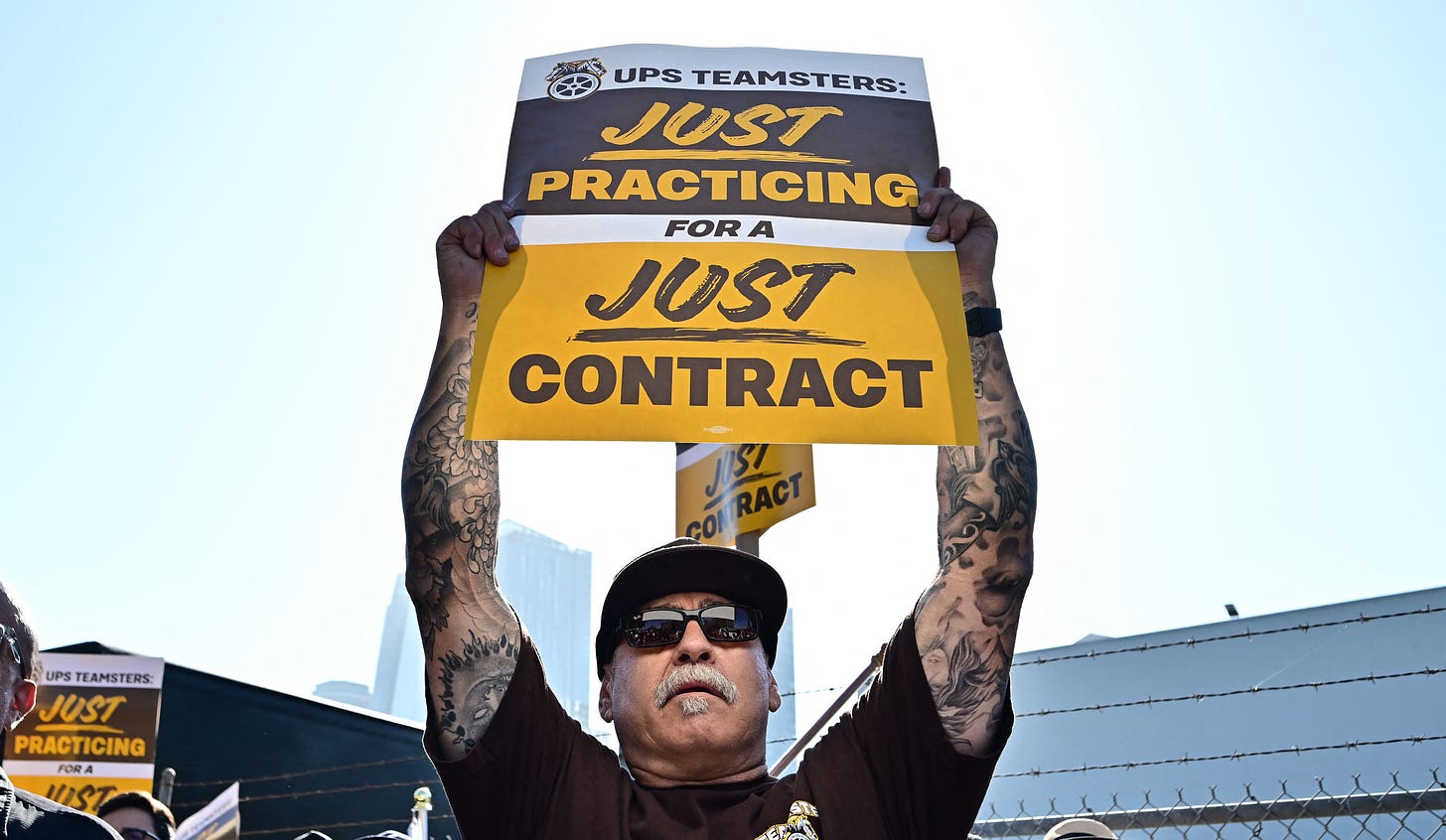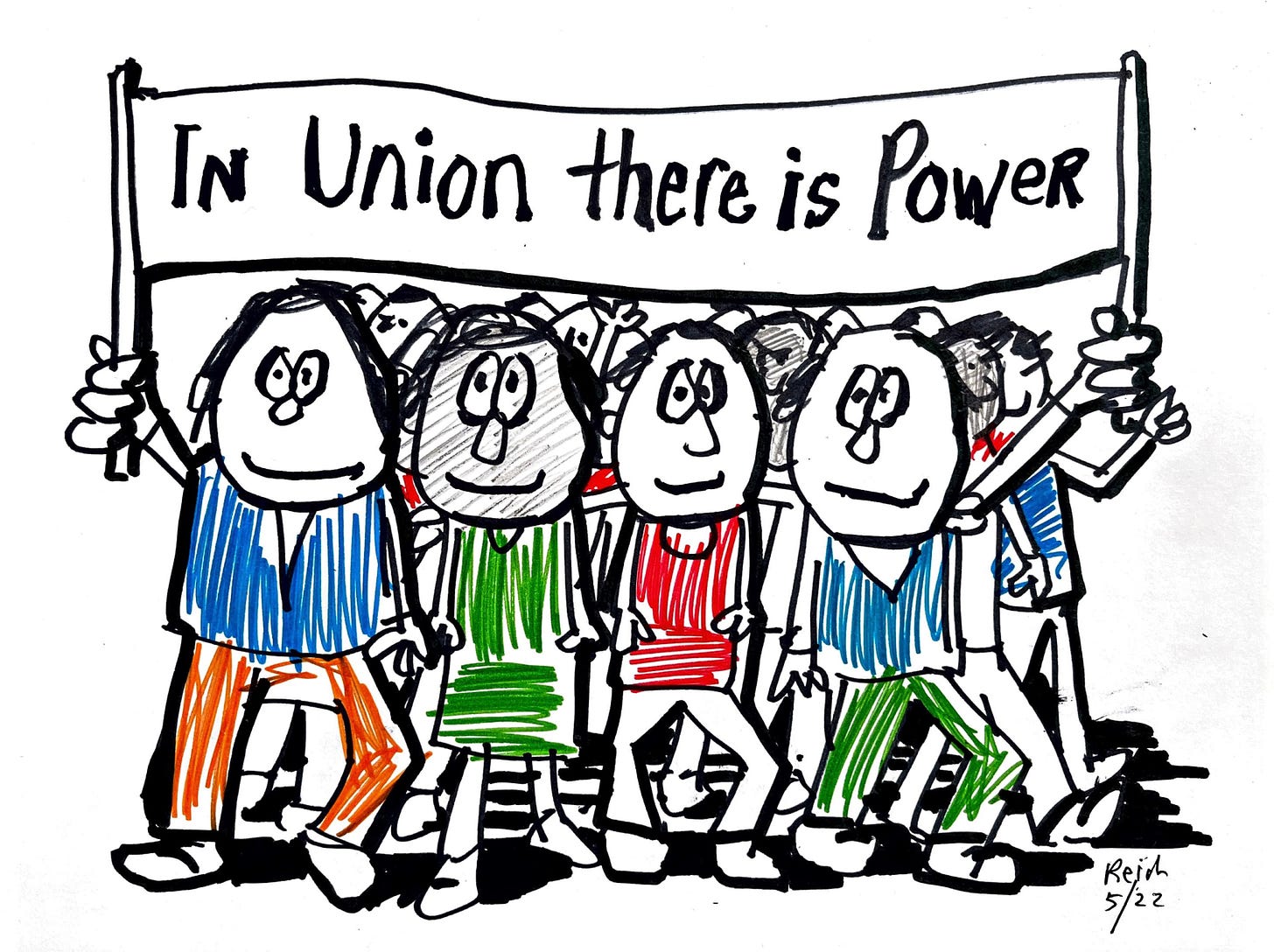UPS and the summer of our labor discontent
Are we witnessing the stirrings of a stronger labor movement?
Friends,
Good and important news on the labor front (from your former labor secretary).
What would have been one of the biggest labor strikes in U.S. history has likely been averted, as Teamsters reps agreed to a tentative contract with UPS. The contract must now be voted on by the 340,000 unionized UPS workers.
The tentative deal reportedly includes $30 billion in wage increases for all UPS employees (including part-timers), elimination of the two-tier wage system, the establishment of MLK Day as a paid holiday for all workers, and a ban on driver-facing cameras in truck cabs as well as forced overtime on drivers’ scheduled days off.
Oh, and the installation of air conditioning and fans in delivery trucks.
Temperatures in the back of delivery trucks have reportedly reached 120 degrees, which has resulted in over 140 UPS employees suffering severe heat and dehydration-related injuries since 2015. One California driver died while delivering packages last June.
As a result of the tentative agreement, air conditioning will be equipped in new delivery trucks, while existing trucks will receive additional fans and air induction vents to protect drivers.
Folks, never underestimate the power and importance of labor unions.
UPS is one of the most profitable delivery companies in the world. In the past two years, its profits grew close to THREE TIMES what they were before the pandemic.
The company also spent $8.6 billion on stock buybacks and dividends in 2022, while paying its CEO $19 million — a figure 364 times higher than the earnings of the company’s median employee.
.
UPS workers rightfully wanted a bigger piece of the pie they helped create, and better safety protections while on the job.
As we’ve seen across so many industries, major corporations are making big bucks off the backs of their workers — many of whom were quick to be labeled “essential” as they risked their lives throughout the pandemic.
But working people everywhere have seen their hard work result in stagnant wages while CEOs, other top executives, and major investors do gangbusters.
Forty years of union-busting and trickle-down economics has made the rich richer, while eviscerating the American working class.
That’s why UPS workers fought back. And why over 320,000 other unionized workers across various industries have gone on strike so far this year. They are organizing to rebuild worker power and demand the pay and dignity they deserve.
Never forget this: Working people outnumber the billionaires and CEOs.
If workers stand together, they will win.
It’s an old-fashioned idea that’s as true today as ever. It’s called Solidarity.
Unfortunately, after decades of union-busting and so-called “right-to-work” states, only 6 percent of private-sector workers are unionized today. When I was a kid in the 1950s, a third of all private-sector workers were unionized.
Which goes a long way to explaining why in the three decades after World War II, America created the largest middle class the world had ever seen. And why, starting in the 1980s, that middle class has hollowed out — creating anger and anxiety that’s been channeled by cynical, power-hungry politicians into racism, xenophobia, and rage.
Does this summer of labor discontent signal that the pendulum is about to swing back?





Unions hit the wealthy in the only place they care about... their pocket. Labor will be the savior of America and the world in fact.
It's almost as if workers are recalling some sort of long-forgotten yesteryear when they were called "essential" and saved the economy, with little to no help from the overcompensated bosses now clamping down on their "unreasonable requests" for things like water and fair pay. Funny, the entire globe was witness to the true might of workers united, but monopolistic power, regulatory capture and a compliant media have quickly worked to squash our belief in that briefly undeniable truth.